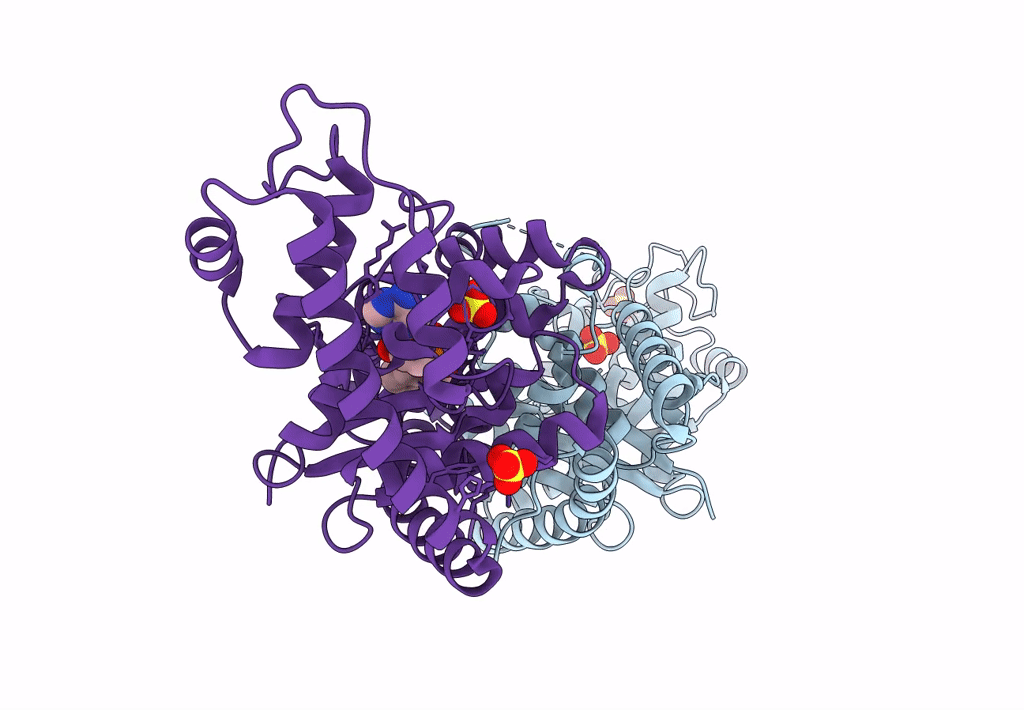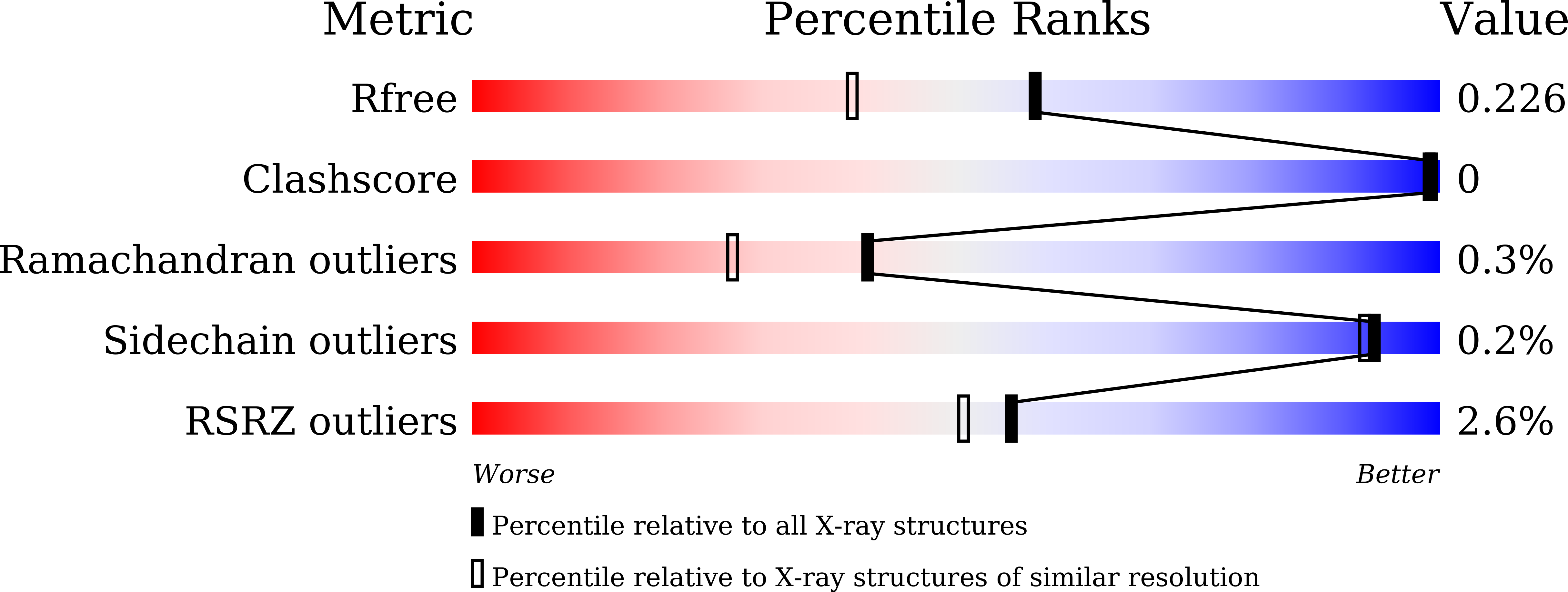
Deposition Date
2023-01-13
Release Date
2023-04-12
Last Version Date
2024-05-29
Entry Detail
PDB ID:
8I1W
Keywords:
Title:
The asymmetric structure of homodimeric E. coli TrpRS bound with tryptophanyl adenylate at one of its two active pockets
Biological Source:
Source Organism:
Escherichia coli K-12 (Taxon ID: 83333)
Host Organism:
Method Details:
Experimental Method:
Resolution:
1.80 Å
R-Value Free:
0.22
R-Value Work:
0.18
R-Value Observed:
0.18
Space Group:
P 1 21 1


